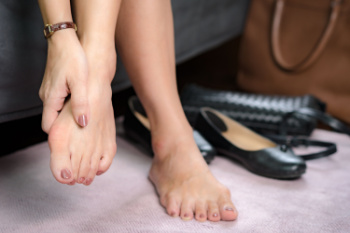
A bunion is more than a bump on the side of the foot. It forms when the joint at the base of the big toe gradually shifts out of alignment, causing the toe to angle inward. This can lead to pain, swelling, and difficulty finding comfortable shoes. Bunions often develop over time and may be influenced by inherited foot structure, poor footwear choices, or medical conditions such as arthritis. Ignoring a bunion may cause the symptoms to worsen. Over time, it can limit mobility and change the way a person walks. Conservative measures such as padded inserts, toe spacers, and proper footwear may offer relief. When those options fail, a podiatrist may recommend surgery to realign the joint and restore function. If your big toe joint feels sore, stiff, or visibly out of place, it is suggested that you consult a podiatrist for appropriate treatment.
If you are suffering from bunions, contact David Lambarski, DPM of Northeast Foot Care. Our doctor can provide the care you need to keep you pain-free and on your feet.
What Is a Bunion?
A bunion is formed of swollen tissue or an enlargement of boney growth, usually located at the base joint of the toe that connects to the foot. The swelling occurs due to the bones in the big toe shifting inward, which impacts the other toes of the foot. This causes the area around the base of the big toe to become inflamed and painful.
Why Do Bunions Form?
Genetics – Susceptibility to bunions are often hereditary
Stress on the feet – Poorly fitted and uncomfortable footwear that places stress on feet, such as heels, can worsen existing bunions
How Are Bunions Diagnosed?
Doctors often perform two tests – blood tests and x-rays – when trying to diagnose bunions, especially in the early stages of development. Blood tests help determine if the foot pain is being caused by something else, such as arthritis, while x-rays provide a clear picture of your bone structure to your doctor.
How Are Bunions Treated?
- Refrain from wearing heels or similar shoes that cause discomfort
- Select wider shoes that can provide more comfort and reduce pain
- Anti-inflammatory and pain management drugs
- Orthotics or foot inserts
- Surgery
If you have any questions, please feel free to contact our offices located in Amsterdam and Clifton Park, NY . We offer the newest diagnostic and treatment technologies for all your foot care needs.
